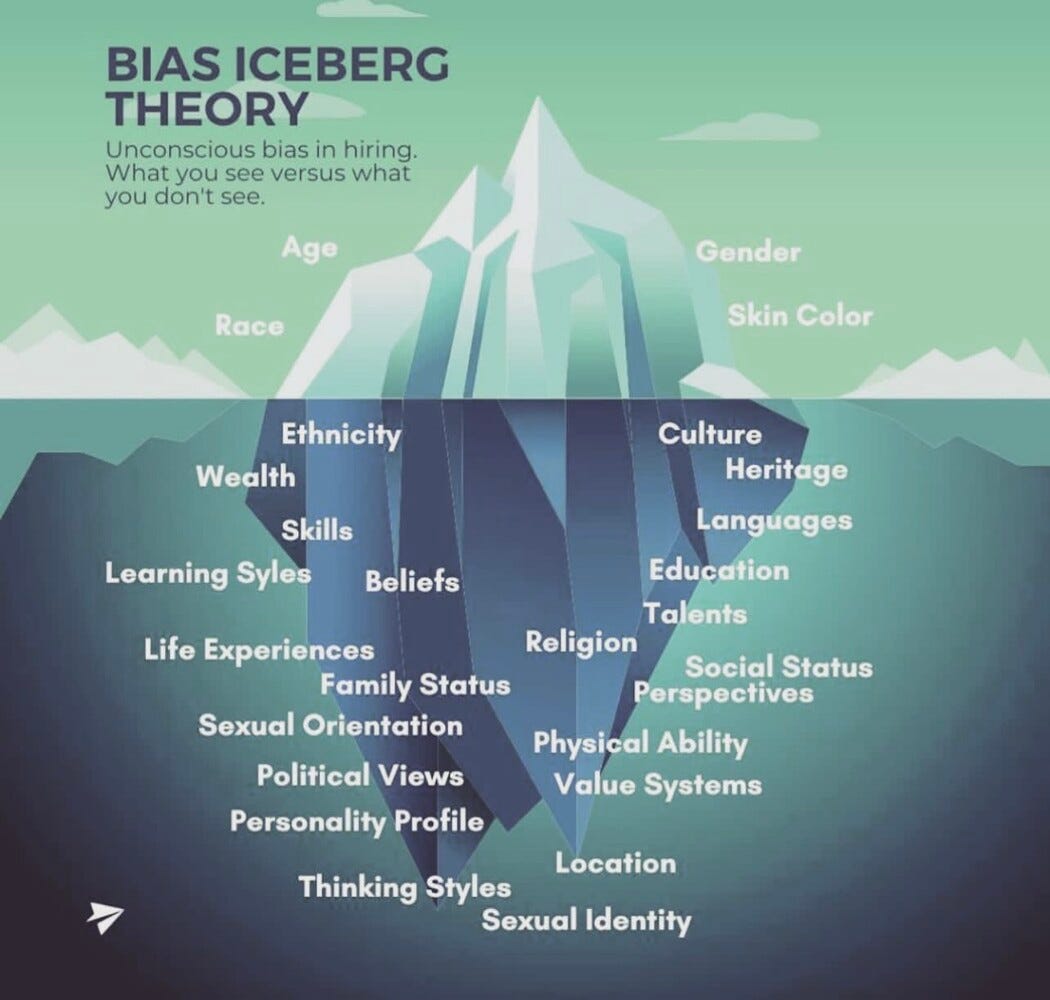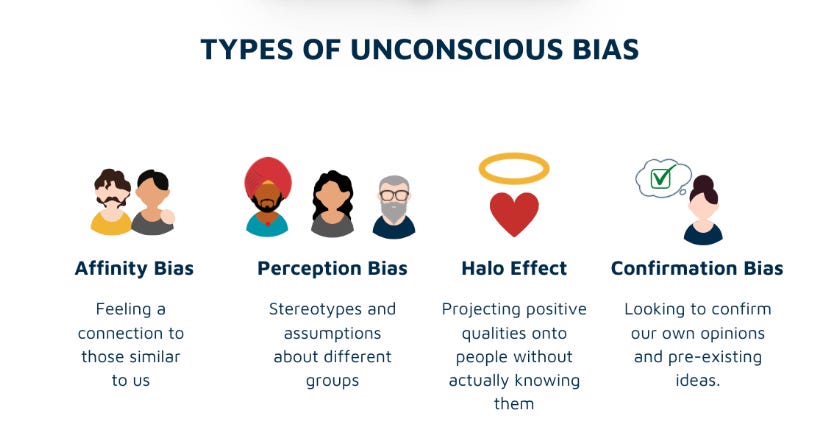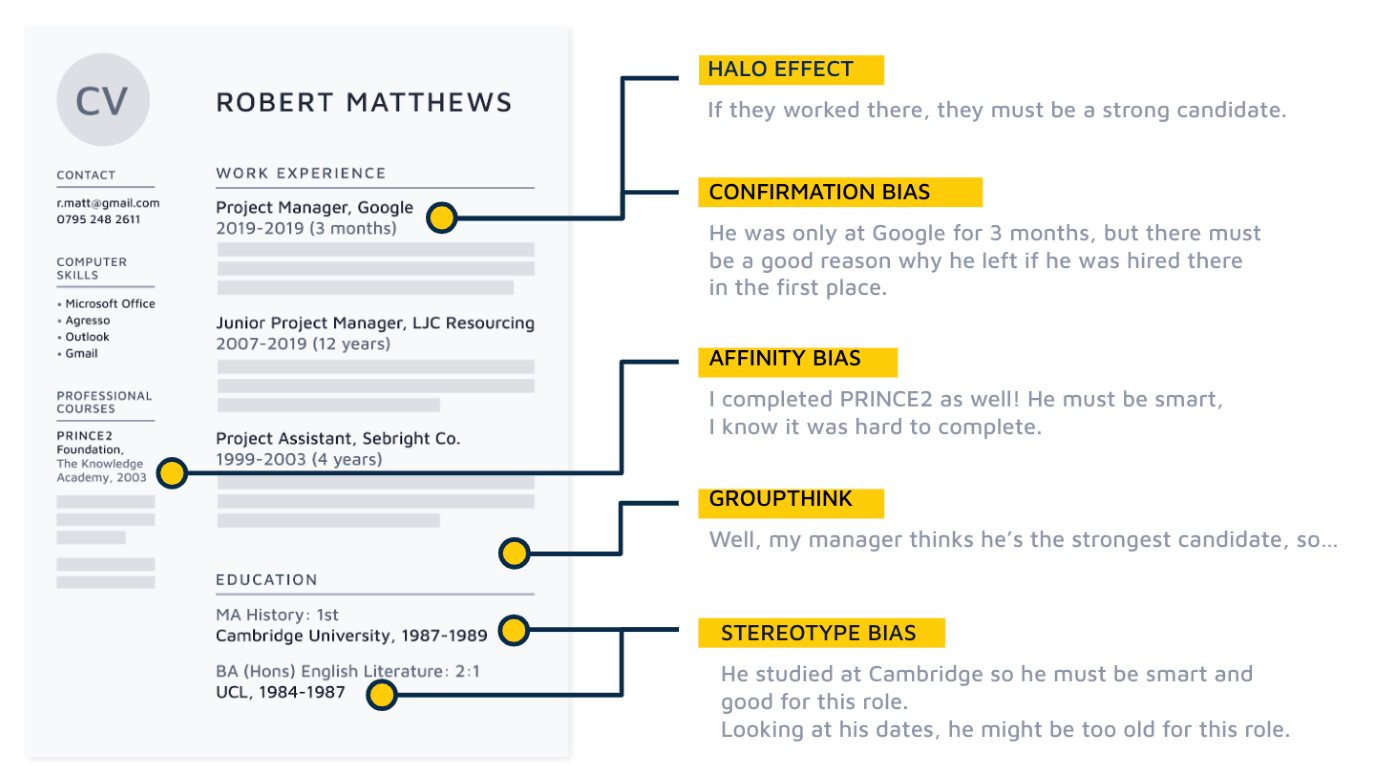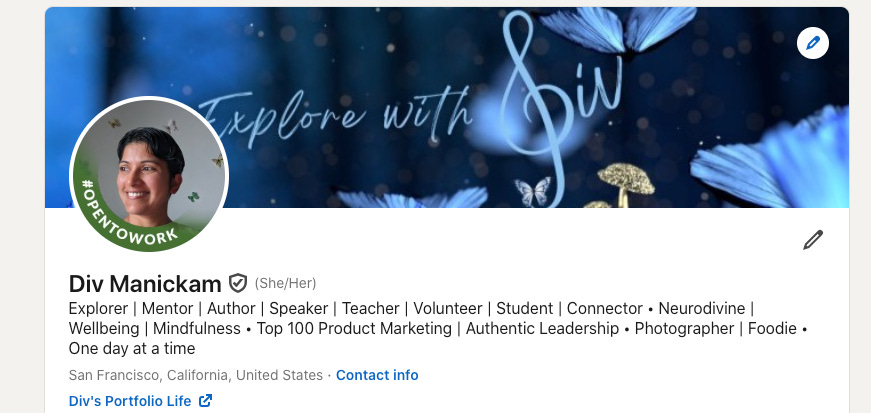How often do we pause to think vs react?
Most decisions are made in split seconds even if we have been sitting with the idea and doing our due diligence with information and context as much as we can.
How many decisions do you make in a day? conscious or subconscious…
As a leader, we are probably making decisions every few minutes as we bring teams together on shared goals, collaborate with our peers and senior leaders in the company.
In the book, Unconscious Bias, learning the types of biases was a good start to know the difference.
Great leaders challenge themselves as much as they challenge others.
To be human is to have bias.
Workplaces achieve their highest performance when they allow their employees to be whole people
In the High-Performance Zone, people feel respected, included, and valued, and are able to contribute their best.
When an imbalance of power is present in the conversation, we do not feel psychologically safe.
I agree with the analogy of an iceberg to how much we know of folks in our workplaces and lives. I am a believer in fostering environments that are safe for folks to be their authentic selves. Building psychological safety is about balancing the scales of power in human interaction.
On average, about 10 percent of an iceberg is above the surface;
90 percent is below the surface, invisible to us.
Freud compared the mind to an iceberg.
The conscious mind being as being the tip of the iceberg (that above the water).
The unconscious mind is what is unseen beneath the water.

The Bias Iceberg Theory suggests that biases are like icebergs - what we consciously perceive (such as age, race, gender, color, or disability) is only the tip of the iceberg. Beneath the surface lie deeper, unconscious biases that can significantly influence our perceptions and decisions.
In hiring, this becomes fundamental to recognizing and mitigating these biases to create an inclusive recruitment process. Here are a few unconscious biases from the book that might help us be more mindful in our workplace.
Confirmation bias is the idea that we tend to seek information that supports our existing beliefs.
Anchoring bias is the idea that we rely on the first piece of information we see to make decisions.
In-group bias is our tendency to favor people we like or those who are like us, while excluding those who are different.
Sunk cost bias is our tendency to continue our current course of action because we’ve invested time, money, or energy into it.
Candidate Experience Reimagined.
Today, I am going to share a few lessons learned and templates for the candidate experience — from hiring/interview to onboarding new team members to career growth.
As we can see in the resume example below, our biases are unconscious and not intentional, but they exist at all times during our decisions to interview or hire a candidate.
How can we be better in our recruitment and be self aware to catch these biases?
Same applies for Linkedin profiles, let’s not assume, but rather ask.
I genuinely appreciated when a recruiter asked about my short term roles. LiRA was a NSF funded 4-month contract and the other didn’t work out as I hoped - impacted my wellbeing.
And I shared my honest answer that I took time to heal from anxiety and life changes during 2022-23 and a toxic workplace is not an environment where I thrive.
Having a supportive and safe environment is crucial to wellbeing and growth.
Often times, roles come with predefined # of years experience etc, and we may or may not be the right fit, but we could connect anyway. We can never know what the road ahead has planned for us.
Some folks see my portfolio career and may think about commitment. Please ask always - I am neurodiverse and each interest/focus/role in my career complements and makes me better in all the diverse roles together - as a product marketing leader, mentor, author, teacher and explorer. I always have and will always give 121% to everything I do. The extra 21% is my commitment and personal accountability. A supportive and safe environment is all it takes to be my best authentic self.
In the book: Untypical, I can understand how neurodiverse folks thrive in the workplace and what drains our energy. I am truly empathic and not interested in any ounce of workplace politics or manipulations. Zero tolerance for manipulative folks in work and life.
Untypical: How the World Isn’t Built for Autistic People and What We Should All Do About it
https://www.goodreads.com/book/show/61111570-untypical
From empathy to RSD to pattern spotting to monotropic and special interest...
Highlights from the book 📖
Autistic people are tremendous empaths taking on the prevailing emotions in a room and not knowing what to do with them.
Rejection Sensitivity Dysphoria is a set of reactions to any kind of negative attention seemingly no matter how minor or inconsequential.
Autistic people exist at a far higher level of stress and anxiety. Our constant worry makes us very insecure and drains our confidence. This is no good in the workplace, especially when we're neurodivergent.
I simply cannot relax.
I know how to try to relax. I have, over the years, tried many different strategies to get my head to calm itself down and find a moment's peace.
The endless pattern spotting is a key trait that many autistic people share. It's part of what makes some of us excellent at pattern-spotting jobs involving data, numbers and programming, and our brain excels at it.
For about 80 per cent of the time I was writing, and in that last 20 per cent I was effective and focused. Much is made of how a lot of autistic and ADHD people end up doing the bulk of their work- whatever it may be just before deadline.. perhaps this is why 4-week writing sprints worked for my books and my weekly schedule to publish on substack.
This difficulty with planning for the future is linked with my inability to envisage any future beyond a month hence. After all, how can you plan for a future that you literally cannot conceptualise? I wonder how many autistic or ADHD people would agree.. I just booked my return home to SF on Saturday. One day at a time 🙏 .. perhaps why I plan for the upcoming week meticulously.
Never curtail an autistic person's access to their interests. Do not view these interests as merely hobbies. We must understand the regulatory benefits they have, and the way they enable us autistic people to manage our stress.
Autistic special interests are extremely specific with neurodivergent folks.
Monotropism as a theory helps us to understand why this is so often the case. We autistic people tend to concentrate our attention (or processing resources) on relatively few things at a time.
Where most people are polytropic - meaning that they have multiple channels of processing going on, or multiple interests aroused at a time - autistic people are monotropic, having our attention fully occupied by a small number of interests at any moment. As a result, we're able to devote enormous energy and time to singular focuses.
Resources
Neuroclastic.com - a collection of the best writing from autistic people across the world.
Autastic.com
I just came across www.levels.fyi which shows a salary comparison across different teams from product to engineering to marketing. Interesting ways to consider equity and inclusion.

Embrace mindfulness
As leaders, it’s up to us to create the workplace of tomorrow. Discover our unconscious bias and find ways to be better in how we perceive and receive folks in our workplaces and our lives.
[m&m 4 life] 2min Mindful Motivations: Intention | Focus | Creativity | Lovingkindness
Over the past 2 years, Simon Moyes’ 2-minute mindfulness meeting starters from Wise at Work have helped me start my meetings and my classes with the right mindset. To stay grounded in my day to day responsibilities as a leader and show grace and appreciation for my team. Thank you!
A strong mindfulness practice helps us become conscious of our thoughts, feelings and emotions. Neurodiversity is a growing focus of inclusion programs, but we know very little to seek to understand how to support folks as we navigate our workplace from sounds and noise to lighting and distractions.
Lovingkindness and mindful compassion could go a long way to show that we care. Open our heart and let’s leave our biases at the front door and foster a safe environment for all of us to thrive and grow as a collective.












![[m&m 4 life] 2min Mindful Motivations: Intention | Focus | Creativity | Lovingkindness](https://substackcdn.com/image/fetch/$s_!zPVd!,w_280,h_280,c_fill,f_auto,q_auto:good,fl_progressive:steep,g_auto/https%3A%2F%2Fsubstack-post-media.s3.amazonaws.com%2Fpublic%2Fimages%2F03e9627a-bf4f-44f3-b385-4c7335757606_1920x1080.jpeg)